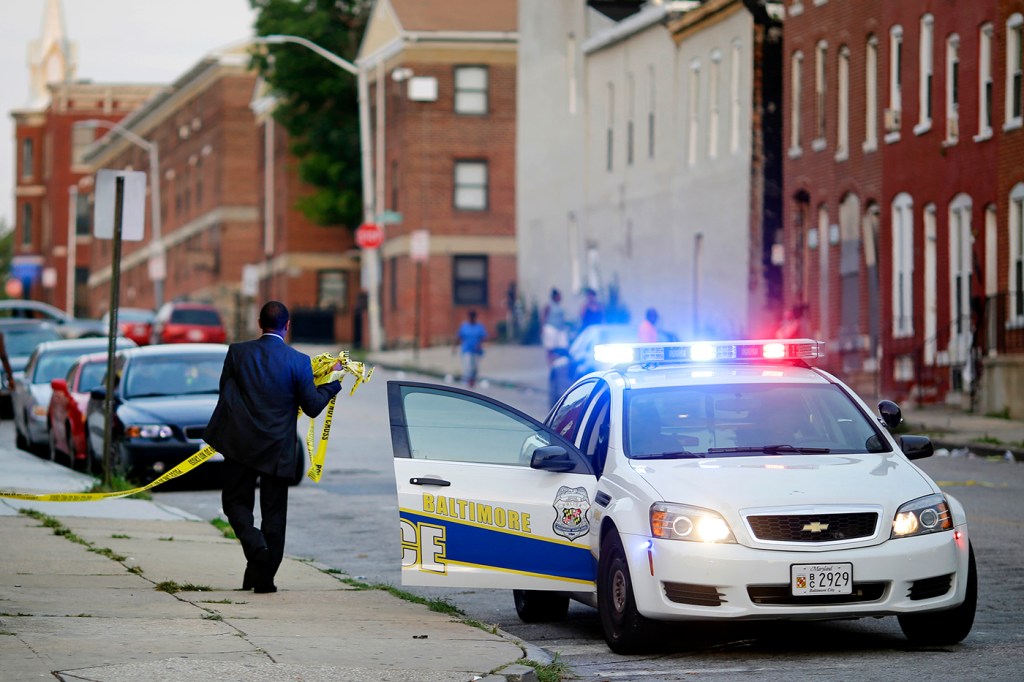Fostering community is the key to stopping group violence and fatal shootings


Anthony Braga, left, university distinguished professor of criminology and criminal justice, and Ben Struhl, executive director of the Center for Crime and Community Resilience, partner with the City of Baltimore to reduce gun violence. Left photo by Matthew Modoono/Northeastern University and right photo courtesy of Ben Struhl
For the sixth straight year, Baltimore has surpassed 300 homicides, most of them shooting deaths. For a city of 600,000 people, that’s an “off-the-charts level of violence,” says Jeremy Biddle, a senior advisor on gun violence prevention in the Baltimore Mayor’s Office of Criminal Justice.
In an effort to quell the city’s rampant gun violence, the Center on Crime and Criminal Resilience (CCR) at Northeastern has partnered with the City of Baltimore on a crime prevention program that will strive to reduce gang violence.
The Group Violence Reduction Strategy project is rooted in a set of strategies broadly referred to as “focused deterrence,” a crime prevention system designed to stop violence through social services, community-based actions, and very narrowly-targeted law enforcement. The team plans to pursue this blend of different strategie, says Anthony Braga, Elmer V. H. and Eileen M. Brooks distinguished professor of criminology and criminal justice at Northeastern, who is leading the project along with Ben Struhl, the executive director of CCR.
“We’re going to use strong collaborations between criminal justice agencies, social service organizations, and community-based groups to deal with recurring violent crime problems in Baltimore,” Braga explains. “The key work that we do at Northeastern is collaborate with on-the-ground partners in these cities to understand the underlying causes of violence, who is being affected, and which resources we can tap into for help.”
Braga has worked in violence reduction for 25 years, and in his experience, the most effective projects combine efforts from law enforcement, academia, and policy—and must be embraced by the city government.
For example, Braga previously worked on a project with the city of Oakland, which saw a historic drop in violence after adopting a similar strategy (although the city has seen a spike in violence during the pandemic, and is now dealing with its worst homicide rate in seven years).
“The strategy wasn’t effective until the mayor decided to institutionalize it as the city’s response to violence,” Braga said. “In previous incarnations, it was the police department working alone or viewed by on-the-ground partners as some academic exercise.”
In Baltimore, the CCR team has already been working with a wide range of government partners, including Mayor-elect Brandon Scott, Police Commissioner Michael Harrison, and State’s Attorney Marilyn Mosby.
The project’s main approach for reducing group violence is investing seriously in community-building. “When you have violent gangs in cities, these are people who have become disconnected with their community,” says Struhl.
“This project is trying to connect with these people and bring resources to the table to help them change their behavior,” Struhl says. “They’re not going to stop being a gang, but they might be less violent.”
One way the group plans to achieve a closer sense of community is through “call-ins:” meetings in which violent groups are invited to hear members of the community explain how the violence affects them. In addition to the call-ins, social service providers will also offer help to those who want it.
“It’s important for those at risk of committing or being victims of serious violence to hear from the community,” Braga says. “‘We don’t want to lose you to senseless gun violence, we don’t want to lose you to the criminal justice system, and we want you to be a part of our community.’”
Struhl and Braga stress that the effort in Baltimore will not be a sweeping crackdown on crime. “It’s very specific to these violent groups,” Struhl says.
“There will be an enforcement component. That’s important for accountability,” Braga says. “But this isn’t a program that’s designed to remove people from the streets in large numbers. In some cases, it could be changing the conditions of someone’s probation. That could be enough to get them acting differently. In other cases, it could be getting them involved in social services and job opportunities.”
Struhl says the group’s partners in Oakland, where the initiative was called the California Partnership for Safe Communities, defined success through a specific set of measures: whether the work reduced serious violence, built community trust, and achieved better outcomes for the highest-risk people.
“Incarceration can’t be the strategy,” Struhl says. “That’s what we’re trying to accomplish in Baltimore.”
For media inquiries, please contact media@northeastern.edu